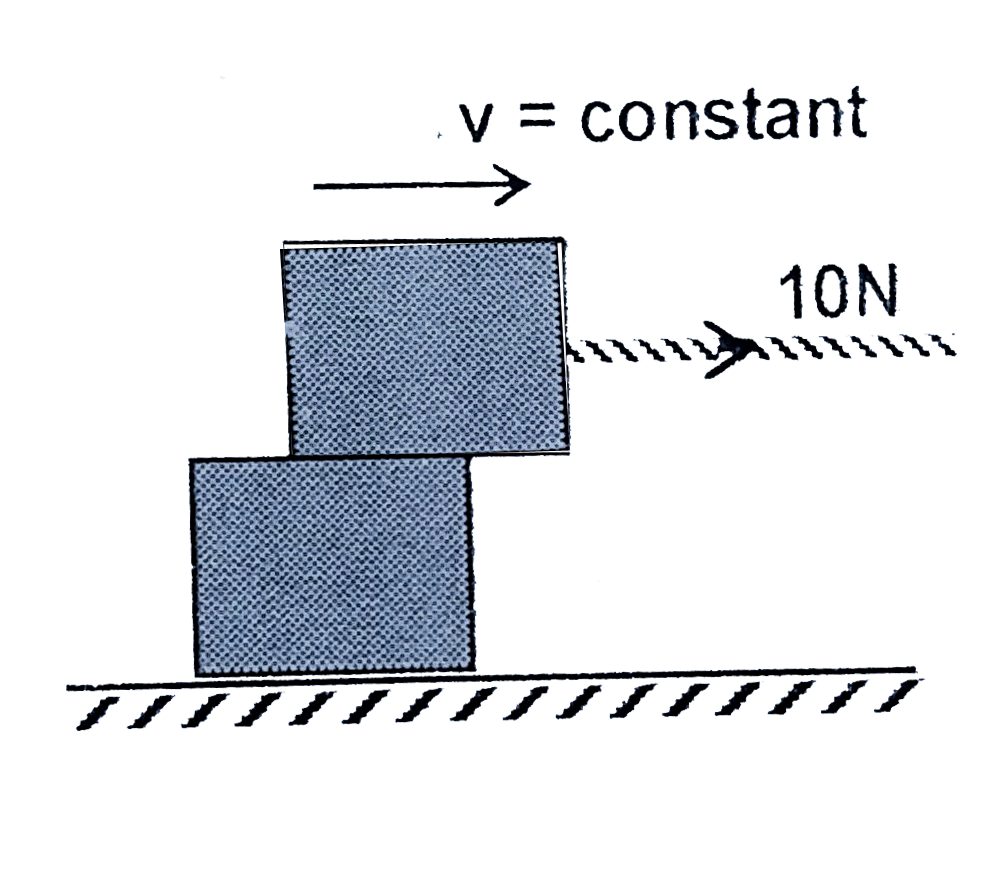Using a horizontal force , we intend to move a wooden cabinet across a floor at constant velocity. What is the frictional force that will be exerted on the cabinet?
The correct Answer is:200 N
To solve the problem, we need to determine the frictional force exerted on the wooden cabinet when a horizontal force of 200 N is applied to move it at a constant velocity.
1. Understanding the Situation:
- We have a wooden cabinet that is being pushed with a horizontal force of 200 N.
- The cabinet is moving at a constant velocity across the floor.
2. Applying Newton's First Law of Motion:
- According to Newton's First Law, an object will remain at rest or in uniform motion unless acted upon by a net external force.
- Since the cabinet is moving at a constant velocity, the net force acting on it must be zero.
3. Setting Up the Equation:
- Let F be the applied force (200 N) and f be the frictional force.
- Since the net force is zero, we can write the equation:
F−f=0
4. Solving for the Frictional Force:
- Rearranging the equation gives us:
f=F
- Substituting the value of F:
f=200N
5. Conclusion:
- The frictional force exerted on the cabinet is 200 N.
Final Answer:
The frictional force that will be exerted on the cabinet is 200 N.
- We have a wooden cabinet that is being pushed with a horizontal force of 200 N.
- The cabinet is moving at a constant velocity across the floor.
- According to Newton's First Law, an object will remain at rest or in uniform motion unless acted upon by a net external force.
- Since the cabinet is moving at a constant velocity, the net force acting on it must be zero.
- Let F be the applied force (200 N) and f be the frictional force.
- Since the net force is zero, we can write the equation:
F−f=0
- Rearranging the equation gives us:
f=F
- Substituting the value of F:
f=200N
- The frictional force exerted on the cabinet is 200 N.
The frictional force that will be exerted on the cabinet is 200 N.
Topper's Solved these Questions
Similar Questions
A block weighing 20N rests on a horizontal surface . The coefficient of static friction between the block and surface is 0.4 and the coeffiecient of kinetic frictioni 0.20
a.How much is the friction force excerted on the block?
b. How much will the friction force be if a horizontal force of 5N is exerted on the block?
c. What is the minimum force that will start the block in motion ?
d. What is the minimum force that will keep the block in motion once is has been started ?
e. If the horizontal force is 10N what is the friction force?
View SolutionA body of mass 25 kg is at rest on a horizontal surface. Minimum horizontal force required to just start motion is 73.5N and a force of 49N is needed to keep the body moving with a constant velocity. What is the coefficient of (i) static friction and (ii) kinetic friction ?
View SolutionA uniform ladder of mass 10 kg leans against a smooth vertical wall making an angle of 530 with it. The other end rests on a rough horizontal floor. Find the normal force and the frictional force that the floor exerts on the ladder
View SolutionA bullet of mass 0.005 kg moving with a speed of 200 ms−1 enters a heavy wooden block and is stopped after a distance of 50 cm. What is the average force exerted by the block on the bullet?
View SolutionTo keep a particle moving with constant velocity on a frictionless horizontal surface an external force
View SolutionIf a body has kinetic energy. T, moving on a rough horizontal surface stops at distance y. The frictional force exerted on the body is
View SolutionA block of mass m is moving on a rough horizontal surface. μ is the coefficient of kinetic friction between the block and the surface. What is the net force exerted by the surface on the block?
View SolutionA box of bananas weighing 40.0Nrests on a horizontal surface is 0.40 and the coefficient of kinetic friction is 0.20
a. If no horizontal force is applied to the box and the box is at rest , how large is the friction force excered on the box ?
b. What is the magnitude of the friction forces if a monkey applies a horizontal force of 6.0N to the box and the box is initial at rest?
c. What minimum horizontal force must the monkey apply to start the box in motion ?
d. What minimum horizontal force must the monkey apply to keep the box moving at constant velocity once it has been starts?
e. If the monkey applies a horizontal force of 18.0N What is the magnitude of the friction force and what is the box's acceleration ?
View SolutionA body of mass 40 gm is moving with a constant velocity of 2cm/sec on a horizontal frictionless table. The force on the table is
View SolutionA 10cm cube of meatl is fastened rigidly in place. A second, identical cube of metal is pulled across the top of the first cube at a constant speed by a constant 10N force, as shown. The frictional force between the cubes.

View Solution
